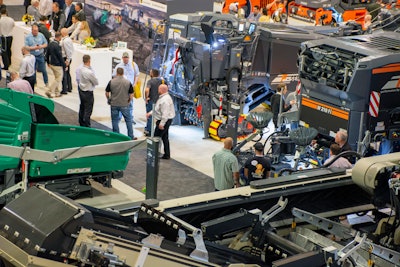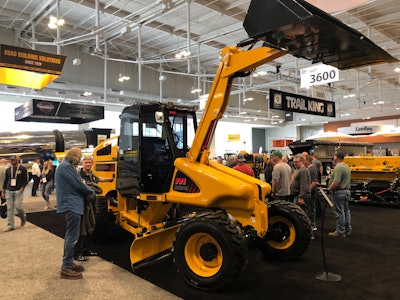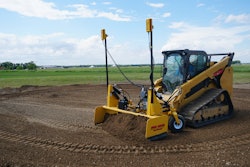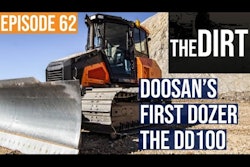
As crowds of potential buyers wound their way among the displays of bright, shiny construction equipment at the recent World of Asphalt, a pervading question was on their minds.
How long will it take for new equipment to be delivered?
Representatives of the asphalt industry’s largest equipment manufacturers were in many cases almost as stumped as the visitors to their booths between March 29 and 31 at the Music City Center in Nashville. The uncertainty brought on by a host of well-publicized issues – supply-chain constraints, labor shortages, increased materials prices – makes it nearly impossible to say exactly how long buyers will have to wait.
Answers ranged from a few months to next year, depending on the manufacturer and the desired piece of equipment. But all of the manufacturers reported challenges in getting equipment out to dealers and to customers.
One thing also for sure, manufacturers are ramping up production as best they can. Not only is the lack of supply driving the plans for increased machine production, but the recently passed infrastructure law is expected to keep demand high for years to come.
“This is the biggest backlog we’ve ever had,” said Brandon Granger, marketing specialist for Mauldin, which specializes in asphalt pavers.
“On all of our equipment we’re out almost the whole year,” he said at the company’s booth.
That included the company’s Maintainer M415XT, which is a combination motor grader, loader and toolcarrier. “We sell specifically to the dealers, so a lot of them are stocking up. Ninety-five percent of the time, it's all sold before they actually get it in stock.”
Citing supply chain struggles, a common question he says has become, “What are we going to be out of today?”
 “This is the biggest backlog we’ve ever had,” said Brandon Granger, marketing specialist for Mauldin, at this year's World of Asphalt.Equipment World
“This is the biggest backlog we’ve ever had,” said Brandon Granger, marketing specialist for Mauldin, at this year's World of Asphalt.Equipment World
“You can still get them in ’22,” he said.
He had the luxury of putting in his production forecast at the factory 10 months ago for the new model being manufactured for the first time in the U.S.
“Because it's newly launched, it's not sold,” he said.
But that availability was not expected to last after the first batch was gone.
“Once I get through that excitement and those units all get sold, then we talk about extended lead times,” he said. “Once you get through that barrage of what we have on forecast, then it's a whole different discussion.”
Dynapac is also planning to increase production of its asphalt paving and compaction equipment, thanks to the federal Infrastructure Investment and Jobs Act.
“In general, we have ramped up forecasts significantly with the infrastructure package,” he said. “The IIJA is going to be massive for us.”
At this point, though, manufacturers are not reporting increased demand due to the historic boost in infrastructure funding. The sentiment seems to be that increased material and job costs will lead states to shift to smaller projects this year and then spend more in 2023 and 2024 as costs normalize.
Federal funding from the law also was late getting out to states by six months due to a stalemate in Congress. That could lead to further project postponement to later years.
 “You can still get them in ’22,” said Dynapac President and General Manager Jamie Roush of the new D30T asphalt paver at this year's World of Asphalt.Equipment World
“You can still get them in ’22,” said Dynapac President and General Manager Jamie Roush of the new D30T asphalt paver at this year's World of Asphalt.Equipment World
He noted that the slowdown at the beginning of the pandemic left many contractors uncertain on whether to buy new equipment. But the construction industry in most cases was soon able to return to work. On top of that, many states saw an opportunity to increase road and bridge work as lockdowns and quarantines meant less traffic.
“There's always that moment of pause where a contractor is like, ‘Do I make that investment or do I go another paving season?’” he says. “And I think a lot of folks said, ‘I'm going to pause.’ And it was enough to cause a blip in 2020.”
But contractors’ businesses grew that year and in 2021, and they continue to do so in 2022. “Then all of a sudden they're like, ‘OK, it looks like clear sailing. It's time to pull the trigger.’”
Quite a few of those contractors were checking out Wirtgen’s latest compact milling machine, the W 120 Fi. The machine on display was the first new W 120 Fi to enter the U.S.
“It's already shipping to the rest of the world,” he said. “It's in a full-on production cycle.”
He added that the company’s dealer network had little inventory. When asked the estimated delivery time on an order placed that day, he said he did not know for certain, but added, “It’s not terrible.”
“I've gotten that question a lot,” he added, noting that much of the answer depends upon unpredictable, rapidly changing conditions.
“A lot of the times, we'll have finished machines sitting at the factory. And now it comes down to logistics – it's getting a ship.”
 “We're going to be making a lot more machines than we did last year," said Eric Booth, Sakai product training and marketing manager, at this year's World of Asphalt.Equipment World
“We're going to be making a lot more machines than we did last year," said Eric Booth, Sakai product training and marketing manager, at this year's World of Asphalt.Equipment World
“We’re seeing anywhere adding on about a month or two to some of those lead times,” said Eric Booth, product training and marketing manager. “That will definitely impact our production schedule.”
“We like to gang run things,” he adds. “So we'll make a model of five or six at a time. But if we need to alter that, we'll change that to a different model that we can get in.”
Despite the challenges, the maker of soil and asphalt compactors is looking to a banner upcoming fiscal year, which started in April, and is forecasting a 50% increase in growth.
“We're looking to really ramp up again for next year,” Booth said. “We're going to be making a lot more machines than we did last year and also importing more” from its overseas factories.
Joe Turnage, product manager for Hyundai, estimated delivery times for the company’s new HL980A wheel loader at about six months.
He said dealers were also collaborating to help contractors get equipment. He presented a recent example of a dealer in Tennessee swapping a wheel loader for a different model at a dealership in Maine a customer wanted.
“They traded machines just to make the deal,” he said. “So having equipment on the ground with other dealers working with each other really helps.”
At Volvo Construction Equipment’s booth, Product Manager John Waldron estimated deliveries of the EWR130E wheeled excavator would arrive in December if ordered that day.
He predicted it would take years for the equipment industry to catch up with the demand.
“I bet you at least until 2025, we'll be slammed … just trying to build everything we can.”
He notes that ramping up production will continue to prove difficult, “because you're limited.”
“If the seat manufacturer can’t get me a seat, I can't send the excavator.”
Luke Gribble, John Deere solutions marketing manager, expressed a similar sentiment about the challenges manufacturers face.
“As long as you can get all the parts and everything to build it,” he says, “we're trying to do the best we can to keep the factories within max capacity.”















